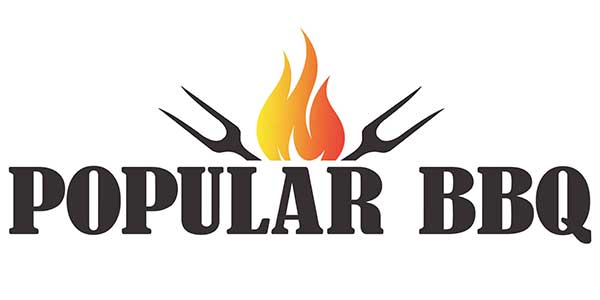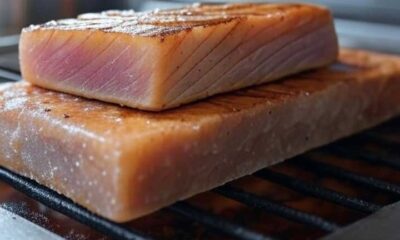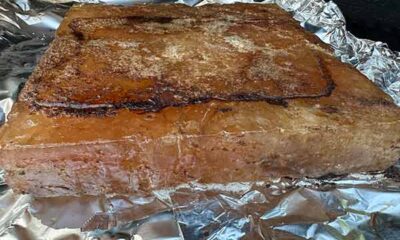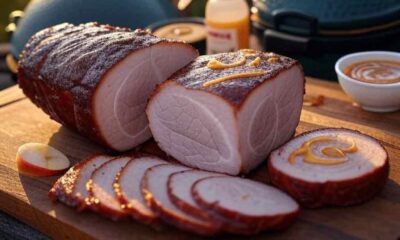Grilling Academy
Barbeque of Barbecue: BBQ Debates Are Catching Fire Now
What is the Barbeque of Barbecue?
Alright, y’all, let’s cut through the smoke—whether you’re spellin’ it “barbeque” or “barbecue,” the barbeque of barbecue is all about that rich, smoky flavor hittin’ your plate just right. I’m Travis “Smoke Daddy” Wheeler, hailin’ from Franklin, Tennessee, where the hickory’s thick and the meat’s thicker. Here’s the straight fire: “barbecue” is the highfalutin spelling, pulled from the Spanish “barbacoa,” which them Taíno folks in the Caribbean started with a wooden frame over a flame. But “barbeque”? That’s the down-home way we holler it ‘round here when the smoke’s curlin’ and the beer’s ice-cold—gritty, real, and dang proud.

The ultimate barbeque of barbecue debate
So, for this smoky shindig, I’m slingin’ both spellings, ‘cause the meat don’t care a lick how you scribble it—it’s all about that low-and-slow magic. Grab your tongs, fire up that smoker, and let’s dive into the barbeque of barbecue, my way.
A Brief History of Barbecue
Barbecue’s been around longer than my granddaddy’s favorite hickory stick. Them Taíno folks started it, smokin’ meat over wood frames, and the Spanish hauled it over to the Americas. By the 17th century, it was takin’ root in the South, where pork and beef got the low-and-slow treatment from folks mixin’ African and European know-how. Fast forward a couple hundred years, and it’s the star of every church picnic, political rally, and family throwdown—cheap, tasty, and built for a crowd. Now, it’s a full-on institution, with regional styles that’ll have you arguin’ ‘til the cows come home.
Regional BBQ Styles: The Barbecue Battleground
If you reckon sports or politics get folks riled up, just ask a pitmaster where the best BBQ comes from. Here’s the lowdown on the big players, smoked up with a little Tennessee grit. Wanna know more? Check out our guide to regional barbeque styles.
Texas: Beef, Brisket, and Bravado
- What’s Cooking: Texas is all about beef, and brisket’s the kingpin. Smoked slow over oak or mesquite ‘til it’s got that bark and a smoke ring to brag about—no sauce needed, ‘cause it’s already perfection.
- The Humor: Texans swagger in claimin’ their BBQ’s tops ‘cause everything’s bigger down there, includin’ their heads. Mention pork ribs, and they’ll school ya on why cows beat pigs any day.
Memphis: Ribs and Rubs
- What’s Cooking: Memphis is pork rib central—wet with sauce or dry with a rub that’ll wake your taste buds. Them joints are as legendary as Elvis.
- The Humor: Memphis pitmasters are so dead-set on ribs, they’d stare ya down for even whisperin’ “ketchup.” Trust me, it ain’t welcome.
Kansas City: Sauce City
- What’s Cooking: Kansas City mixes it all up, but burnt ends—crisp brisket tips—are the real deal. Sauce is thick, sweet, and tangy, drownin’ every bite.
- The Humor: Them folks love sauce so much, they’d slather it on their biscuits. Don’t tell ‘em it ain’t a food group, though.
The Carolinas: Pork and Passion
- What’s Cooking: North Carolina’s all pork, split between Eastern vinegar sauce and Western tomato sauce. South Carolina tosses in mustard sauce just to keep ya guessin’.
- The Humor: Carolinians fight over sauce like it’s the last rack on Earth. Pick the wrong one, and you’re dodgin’ pitchforks.
Alabama: The Wild Card
- What’s Cooking: Alabama’s got white sauce—mayo, vinegar, and spice—slapped on chicken. Tangy as all get-out.
- The Humor: White sauce on BBQ? Alabama’s just messin’ with the South, and dang it if it don’t work.
Tips for Mastering the Barbeque of Barbecue
Whether you’re a smoke-ring pro or just warmin’ up, here’s how to nail the barbeque of barbecue, Smoke Daddy style:
- Low and Slow: Crank that smoker down to 225°F and let it ride for hours—brisket don’t rush, and neither should you.
- Wood Choice: Hickory’s my go-to for that deep, smoky punch; cherry wood’s sweeter if you’re feelin’ fancy.
- Seasoning: Rub it right with salt, pepper, and a touch of cayenne—keep it simple so the meat shines.
- Sauce Timing: Sauce late, brother—hit it in the last 30 minutes so them sugars don’t burn. Try our homemade barbeque of barbecue sauce recipe for a real kicker.
The Tools of the Trade: Grills, Smokers, and Dad Jokes
You ain’t smokin’ without the right gear, and I’ve got opinions hotter than a hickory fire:
- Charcoal Grills: Old-school and gritty—perfect for a quick sear, but watch them eyebrows.
- Gas Grills: Fast and easy, sure, but it’s like cheatin’ at poker—purists like me ain’t impressed.
- Smokers: The real deal for low-and-slow. You’ll smell like hickory for days, and that’s a badge of honor.
- Pellet Grills: High-tech and smoky, but if the power cuts out, you’re just holdin’ a fancy box.
And every pitmaster’s got a dad joke up his sleeve: “Why don’t grills ever quit? ‘Cause they’ve got too much circulation!” Cue the groans while the brisket rests.
The Sauce Debate: To Dip or Not to Dip?
Sauce splits BBQ folks like a hatchet through oak. Some live for it; others say it’s hidin’ weak meat. Here’s the lineup:
- Vinegar-Based: Thin and sharp—cuts through pork fat like a Tennessee twang.
- Tomato-Based: Thick, sweet, and a little spicy—Kansas City’s bread and butter.
- Mustard-Based: Zesty and bold—South Carolina’s wild child.
- White Sauce: Creamy and weird—Alabama’s curveball that hits the spot.
Me? I say smoke it right, and sauce is just gravy. But you do you—just don’t expect me to double-dip.
Barbecue Etiquette: Don’t Be That Guy
BBQ’s about kin and good eats, so don’t muck it up:
- Don’t Hover: I don’t need you eyeballin’ my smoker like a hawk—back off and let me work.
- Bring Something: A bag of charcoal or some sweet tea says you ain’t just here to mooch.
- Compliment the Cook: Even if the pork’s tough, say the smoke’s on point—I’ve been wrestlin’ this fire all day.
- No Double-Dipping: That’s a sin worse than overcookin’ a brisket. Grab a fresh spoon.
The Future of Barbecue: Trends and Traditions
Barbecue’s changin’, but the soul’s still there. Plant-based stuff like smoked jackfruit’s poppin’ up, and high-tech grills got apps now—fancy, right? Fusion’s mixin’ it up too, like Korean tacos or Indian brisket. For the old-school scoop, checkout this article about Outdoor Cooking Through the Ages. Still, it’s all about meat, fire, and folks—simple as that, and twice as good.
Conclusion: The Barbeque of Barbecue Lives On
Well, there ya go—the barbeque of barbecue, smoked up Travis-style. From its roots to its rivalries, it’s a heckuva ride, and every bite’s worth it. Brisket fan or pork puller, there’s room at my smoker. Bring your hunger and a stack of napkins—happy smokin’!
What’s your favorite aspect of the barbeque of barbecue? Share your thoughts and experiences in the comments below!















